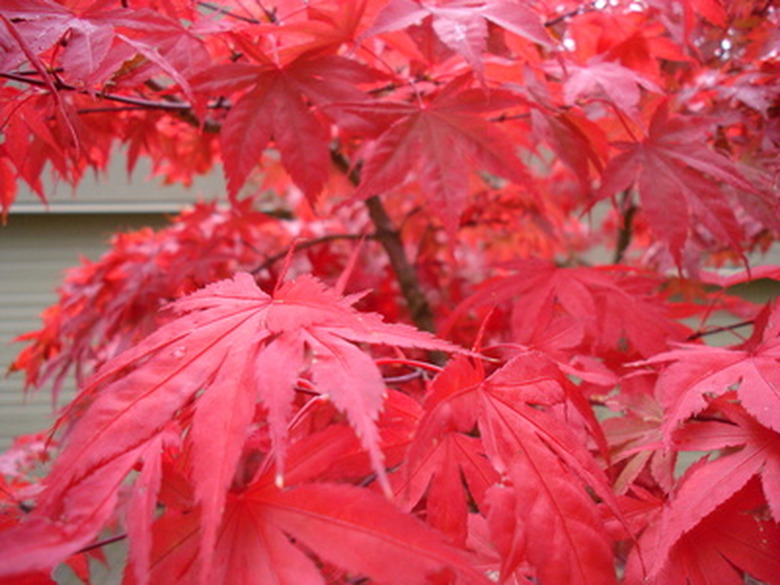How To Care For Chinese Maple Trees
Wherever you choose to grow your Chinese maple tree, know that it will steal all the attention in the fall. Many trees turn vibrant shades in autumn, but the Chinese maple puts them all to shame with a red that is, if possible, redder than red. The Chinese maple, a rare find, can grow 30 to 40 feet tall and thrives in USDA Plant Hardiness Zones 7a to 9b. To care for Chinese maple trees, provide them ample space to spread out and a regular, deep watering.
Step 1
Choose a spot in your garden where the Chinese maple will have lots of room to grow. Check for power lines overhead prior to choosing your planting site. Full sun will help your tree provide the full color of which it is capable.
- Wherever you choose to grow your Chinese maple tree, know that it will steal all the attention in the fall.
- Choose a spot in your garden where the Chinese maple will have lots of room to grow.
Step 2
Water the Chinese maple tree when the top inch of soil becomes dry. Water it deeply and allow the surface of the soil to dry out again prior to watering.
Step 3
Fertilize the maple tree only if a soil test results require it. Soil tests are inexpensive and can be purchased at most large garden centers. Or, take a soil sample to your county cooperative extension office for analysis.
Step 4
Prune the Chinese maple while it is dormant, in late fall or winter. Remove any dead or dying branches and any shoots pointing straight up.
- Water the Chinese maple tree when the top inch of soil becomes dry.
Maple Trees Bud?
More than 120 maple species exist. Within each species are hundreds of cultivars bred for specific traits like color, size or form. Buds set in the fall but species type and seasonal weather conditions influence exact budding times. Limbs, twigs and branches increase in length. During the fall, buds set on this new growth. In cool climates the tree breaks bud in May but in warm regions buds burst in March. Maple trees then enter a dormant phase. Pruning takes place during this phase, when it will not interfere with bud development and when sap is least likely to ooze from cut branches.
- More than 120 maple species exist.
- Pruning takes place during this phase, when it will not interfere with bud development and when sap is least likely to ooze from cut branches.
References
- University of Minnesota Extension: Tree Fertilization
- "Bamboo and Other Things"; Judith Armbruster; 1990
- United States Forest Service Silvics Manual Volume 2 – Acer rubrum L. Red Maple by Russell S. Walters and Harry W. Yawney
- United States Forest Service Silvics Manual Volume 2 – Acer saccharum Marsh. Sugar Maple by Richard M. Godman, Harry W. Yawney, and Carl H. Tubbs
- United States Forest Service Silvics Manual Volume 2 – Acer nigrum Michx. f. Black Maple by William J. Gabriel
